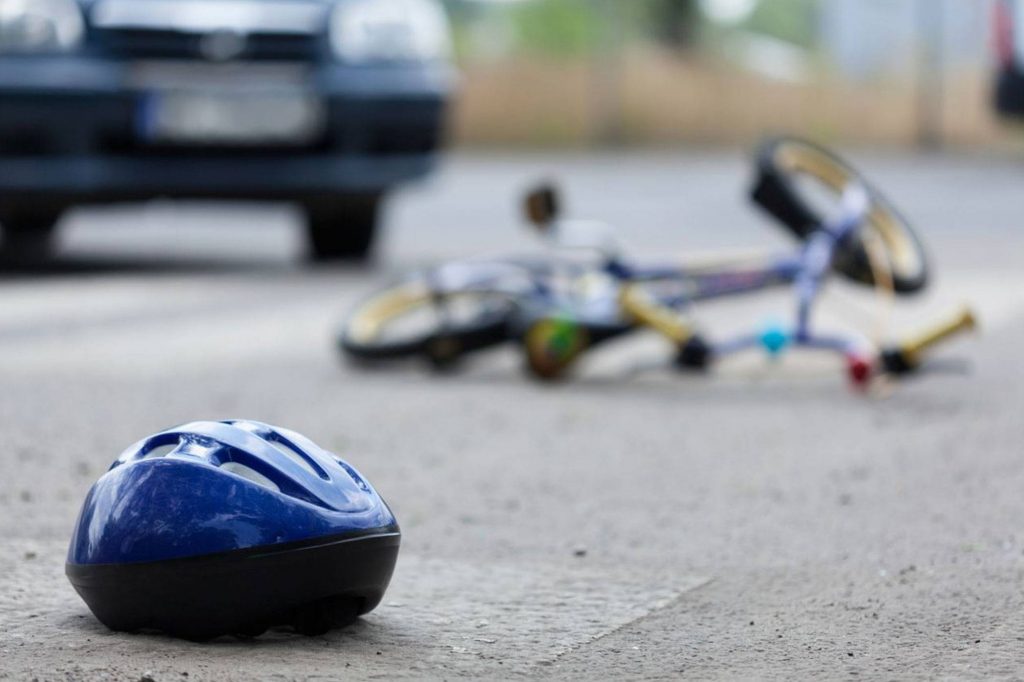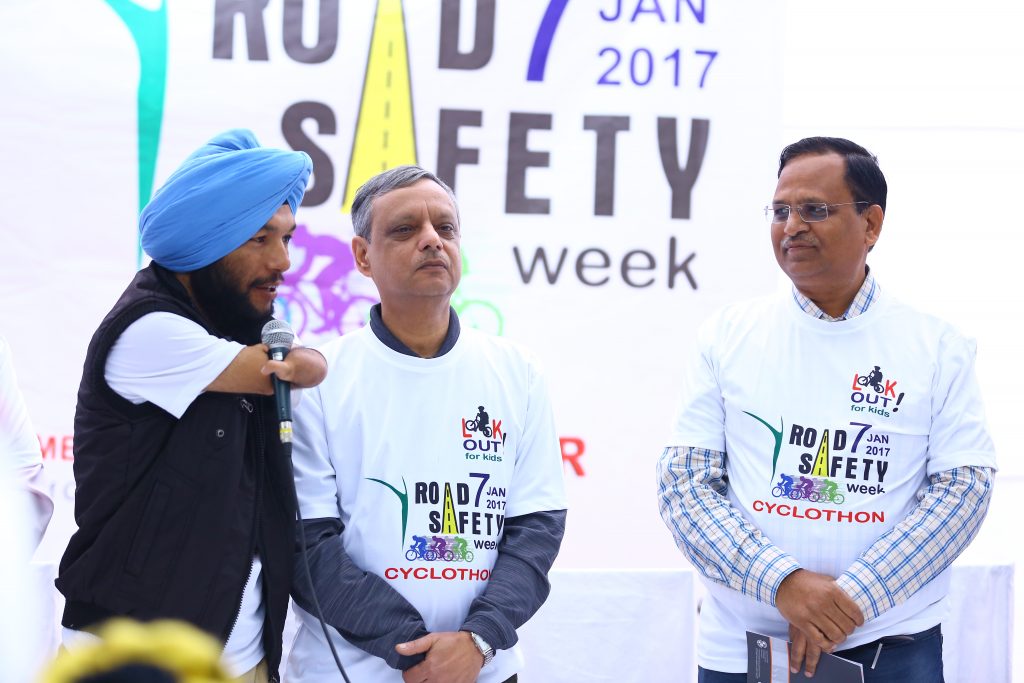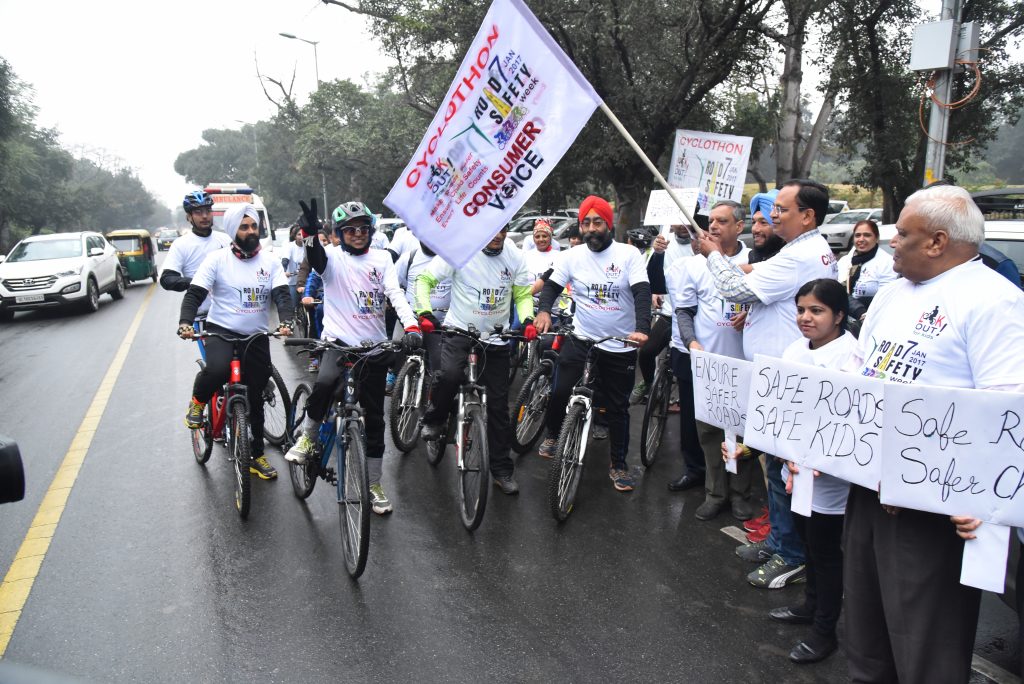By
Jose Kalathil
In order to create awareness about road safety, Consumer Voice, a voluntary organization in the interest of Consumer Education, with the support from Cycling for Environment Club and Delhi Traffic Police, organised a cycle rally, Cyclothon, in New Delhi on Saturday, in which about 100 cyclists participated.
The theme of the rally was ‘Child Safety and Safer Roads – Every Life Counts’. Those who participated in the event included Paralympian Jagwinder Singh. The Road Safety Week is being held from January 11 to 15.
Paralympian Jagwinder Singh addressing the participants. Also seen are Consumer Voice COO Ashim Sanyal (centre) and Minister Satyendra Jain.
On the occasion, Delhi Transport and Health Minister Satyendra Jain exhorted people to respect road users and called for strong laws for road safety. Mentioning the Delhi Government’s initiative of recognizing Good Samaratians who help road victims with a reward of Rs 2,000 and public felicitation, he talked about the creation of elevated cycle tracks to promote sustainability.
Mr Singh also emphasized the need to have more such events to promote road safety among citizens.
According to Ashim Sanyal, Chief Operating Officer, Consumer Voice, “Every year, thousands of children get injured or killed along with other road users on Indian roads due to poor roads and weak road safety laws, which need immediate attention of all stakeholders.”
Delhi Transport and Health Minister Satyendra Jain flags off the rally.
The United Nations Convention on the Rights of the Child (CRC) 1989, has sought protection and care for children. One way to achieve this is to prevent them from being killed on the roads. In addition, one of the new Sustainable Development Goals (SDG) (3.6) calls for halving the global number of deaths and injuries from road accidents by 2020. As one of the signatories to the SDGs, India is bound to enact appropriate legislation to achieve this goal, especially when it comes to safety of children.
According to the National Crime Records Bureau (2013), 20 children under the age of 14 die every day due to road mishaps in India; per week, the number of those in the age group of 3 to 15 killed or seriously injured is 60. In the year 2014, the number of children thus killed was 6,901. This is nearly 675% more than the reported deaths of children from all crimes against them put together. In 2013, their number accounted for 6.1% of the total accidental deaths on roads.
A global study on child road safety has found that road traffic injuries and deaths disproportionately impact children; Road crashes are the number one killer of 15 to 29 year olds, and are soon expected to be the first cause of death for 4 to 15 year olds; Every day, more than 500 children lose their lives on the world’s roads; 95% of road traffic fatalities among children occur in low and middle income countries; Children are a high-risk group for road traffic deaths and injuries; Their limited physical, cognitive, and social development make them more vulnerable to serious injury or death as a result of road crashes than adults; If children are involved in a crash, their relative soft heads make them more vulnerable to serious head injury than adults.
The behavioural risk factors impacting child road safety are as follows:
Helmets:
*For children, wearing a helmet is the single most effective strategy for reducing the risk of injury to the head while riding bicycles or motorcycles.
*Children are more vulnerable to head injuries than adults as a result of not wearing helmets. They are more likley to suffer severe consequences from concussions, including second impact syndrome, which is often fatal or results in learning impairment, than adults.
*Wearing a standard motorcycle helmet correctly can reduce the risk of death by almost 40% and the risk of severe injury by over 70%.
*Requiring helmets to meet recognized safety standards, to be in good condition and to be properly worn, e.g. not cracked and properly fastened, can significantly reduce head injuries.
*When motorcycle helmet laws are enforced, helmet-wearing rates can increase to over 90%.
Child Restraints:
*Child restraints reduce the likelihood of a fatal crash by approximately 70% among infants, and between 54-80% among young children.
*Adult seatbelts are not designed for children. Forward facing child restraints reduce the risk of serious injury by almost 80% compared to children restrained by seatbelts only.
*Child restraints are incorrectly used in 15-80% of cases, because the belt is not properly fastened, the child seat is incorrectly installed, or the belt is placed around a child’s neck, under the arms, or across the abdomen.
*For low and middle income countries where the cost of child restraints can be an inhibiting factor, subsidies for child restraint purchase or schemes where these are made available at no cost or on loan have been shown to be effective in increasing usage rate.
Speed limits around schools:
Gaps in the Current Road Safety Law:
-
While India has made wearing helmets mandatory for all drivers and adult passengers, there is no specific legislation requiring children to wear helmets when riding pillions.
-
There is currently no child restraint law in India.
-
Speed around schools.





No Comments Yet!
You can be first to comment this post!